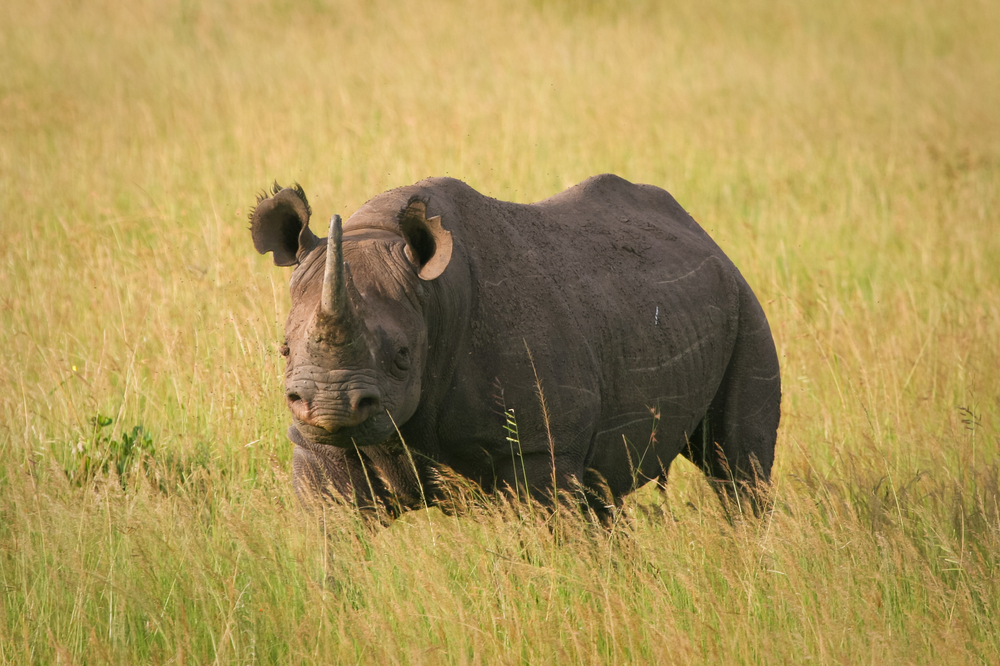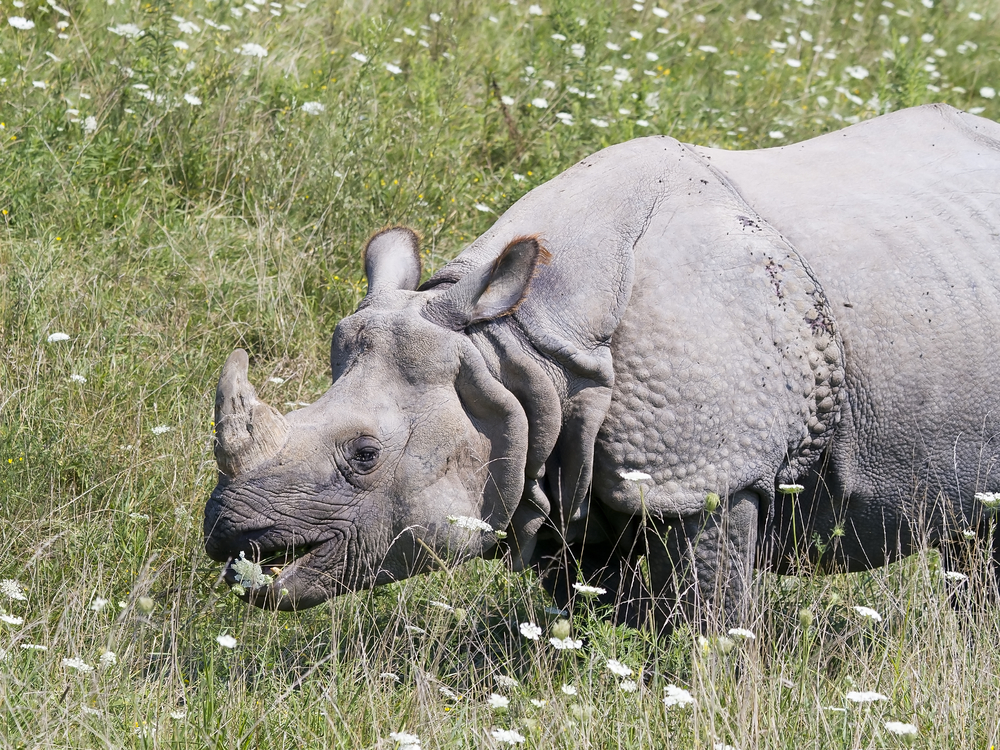A Crash of Rhinos: See All 5 Species

Rhinoceros

A group of rhinoceroses is known as a crash, though these endangered creatures are often solitary.
Rhinos are found in parts of African and Asia, depending on the species.
Some rhinos have one horn, while others have two, and they vary in size from the smallest (the Javan rhino), to the largest (the white rhino)
Here are the five species of rhino. Learn more rhino facts here.
Black Rhino (Diceros bicornis)

(or Prehensile or hook-lipped rhinoceros)
The black rhino lives in the grasslands and savannahs of Africa, where all four of its subspecies are listed as critically endangered. One subspecies, D. bicornis longipes (Western Black Rhinoceros), was declared extinct in 2011.
Black rhinos have two horns on their heads, with the front one being larger. They typically weigh between 1,750 - 3,000 pounds (800 - 1,350 kg) and are about 4.5 - 5.5 feet (1.4 - 1.7 meter) tall at their shoulder.
They have a prehensile lip that is good at grasping grasses and leaves (hence the other names they are known by).
Black rhinos aren't actually black. Their name likely differentiates them from white rhinos, whose name is a corruption of the Afrikaans word "weit," which means "wide" and describes the mouth of the rhinos.
White Rhino (Ceratotherium simum)

There are two subspecies of the white rhino, the Southern White Rhino (C. simum simum) and the Northern White Rhino (C. simum cottoni), which is presumed to be extinct. The Southern White rhino is considered "near threatened," and is the least endangered of the rhino species.
The white rhino is the largest of the rhino species, weighing about 4,000-6,000 pounds (1,800 - 2,700 kg) and standing about 5 - 6 feet (1.5 - 1.8 m) tall at the shoulder. They have two horns, with the front one being larger.
The largest populations of white rhinos are found in South Africa. White rhinos' name comes from the Afrikaans word "weit," meaning "wide," which describes their mouths. English settlers misheard the name.
Javan Rhino (Rhinoceros sondaicus)

(or Asian lesser one-horned rhinoceros)
The Javan rhino is the rarest of the rhino species, with only between 27 and 44 individuals thought to live in the wild. They are believed to have been poached from their former habitat in Vietnam and are now found only in Indonesia's Ujung Kulon National Park. They are listed as critically endangered.
Javan rhinos are also the smallest of the rhinos, weight about half of what white rhinos do (about 2,000 - 5,060 pounds (900 - 2,300 kg)) and standing 5 - 5.5 feet (1.5 - 1.7 m) tall at the shoulder. They have only one horn on their head.
These solitary rhinos are very rarely seen.
Greater One-Horned Rhino (Rhinoceros unicornis)

(or Indian Rhinoceros)
As its name suggests, the Greater One-horned rhino has only one horn. It is generally between 8 to 24 inches (20 to 61 centimeters) long. They are similar in size to white rhinos.
As its name suggests, the Greater One-horned rhino has only one horn. It is generally between 8 to 24 inches (20 to 61 centimeters) long. They are similar in size to white rhinos.
Greater one-horneds are the most amphibious of the rhino species and will immerse themselves in water and munch on aquatic plants.
Sumatran Rhino (Dicerorhinus sumatrensis)

(or Hairy Rhinoceros)
The Sumatran rhino differs from its cousins by the shaggy hairs on their body and ears. It has two horns and typically weighs between 1,300 - 2,000 pounds (600 - 950 kg).
The species is considered critically endangered and is threatened by poaching in its habitats in Borneo and Sumatra. They exist only in protected areas.
Get the world’s most fascinating discoveries delivered straight to your inbox.



